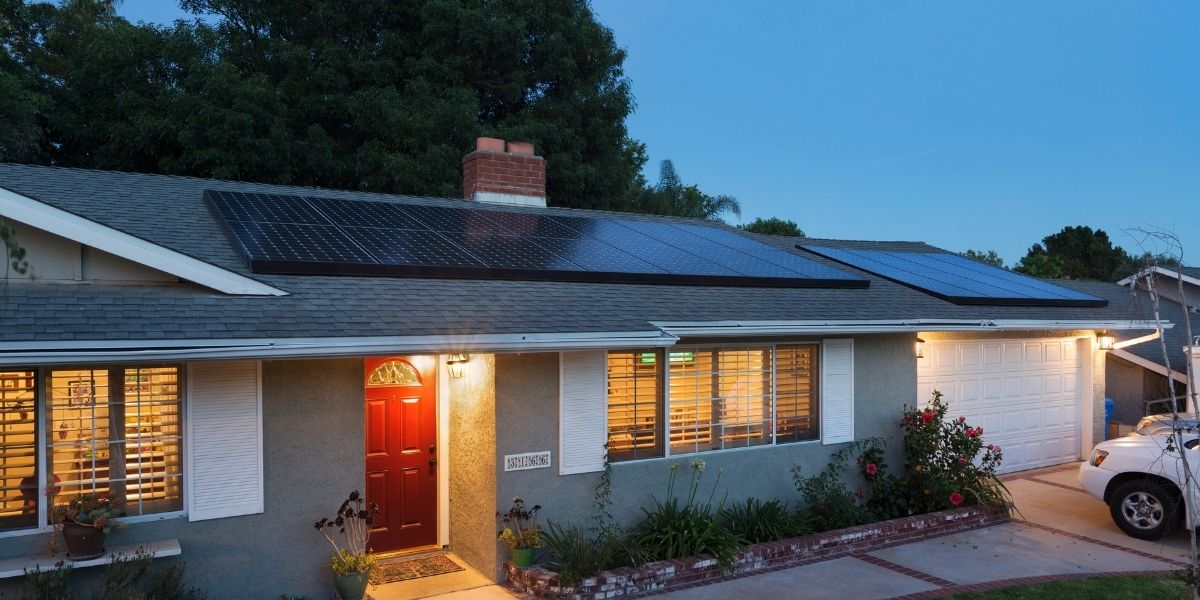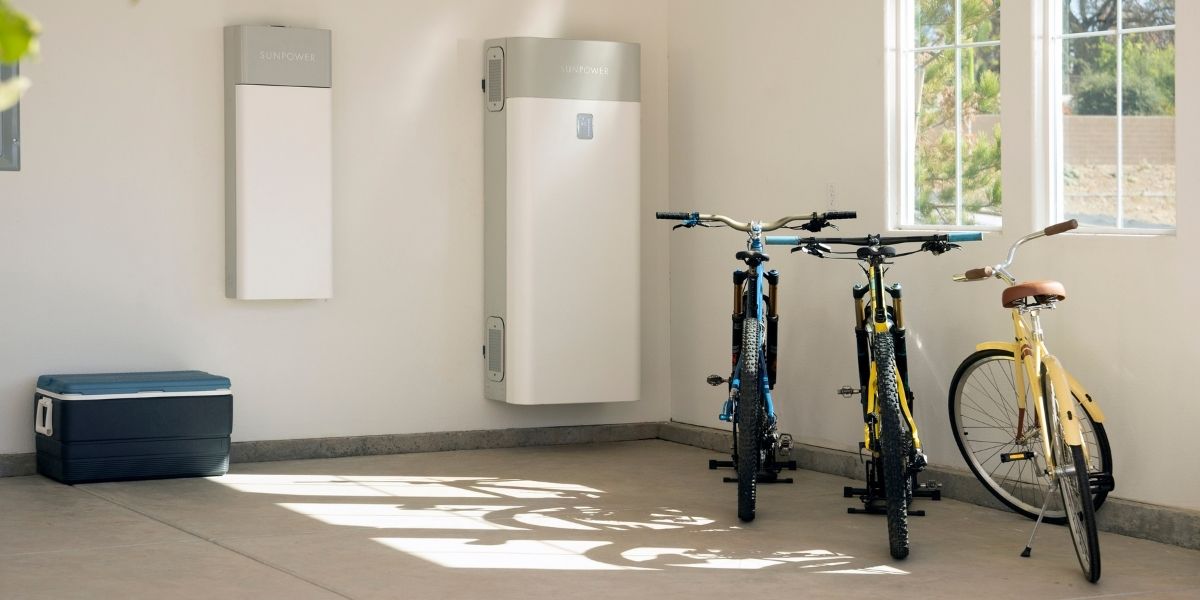Affiliate disclosure
I may receive a commission if you make a purchase through a link marked with an asterisk*.
SunPower is one of America’s oldest solar company’s, and now they also offer residential solar energy storage batteries. It’s also the solar company I get asked about the most. So here you’ll find answers to all the questions you might have about SunPower’s solar panels* and energy storage before you even get a quote. The answers are from Jensen Chapman from the SunPower sales team.

Photo courtesy of SunPower / photographer Patrick Price.
How does SunPower compare to other solar companies?
Jensen: We are fundamentally different and better. We hold the world record for the most efficient and most durable solar cell on the planet. We have over 700 industry patents, and we are the only solar company that has been around longer than our own 25-year warranty.
How big are SunPower solar panels?
Jensen: The average size of a SunPower panel is about 5.4 feet tall and 3.5 feet wide. They vary in size based on the series. Our X Series panels are about 3.5 feet wide and about 5 feet tall. But our A-Series are closer to 5.4 feet tall and about 3.4 feet wide.
How many kilowatts can a SunPower solar panel make in one day?
Jensen: That of course varies. So think of it like this. If a SunPower solar panel is rated at say 400 watts, well, if that panel received 4-5 hours of direct sunlight it could generate about 1.8 kWh’s each day.
How many watts do SunPower solar panels produce?
Jensen: This varies as we have panels rated from 327 watts all the way up to 420 watts.
What maintenance is required for solar panels by Sunpower?
Jensen: Cleaning is all really. Or making sure that the panels are free of any debris like tree trimmings, leaves, sticks, etc. But since solar panels are passive, there are no moving parts up there so nothing to really maintain other than to keep them clean.
How often should I clean SunPower solar panels?
Jensen: Two annual rainstorms usually take care of cleaning, but in or during long dry spells, it is not a bad idea to turn a hose up there once in a while or about twice a summer. Never clean solar panels in direct sunlight and never use any abrasives or chemicals. Use a water hose and maybe a light soapy mix if you have safe and easy access to the roof to better wash them down.
How do I monitor my SunPower solar system?
Jensen: We provide the hardware and software to give our customers the ability to monitor their system’s performance by the hour, the day, the week, the month, the year, and the lifetime of the system.
Who owns the SunPower solar panels after I sign?
Jensen: If you lease a system, SunPower would. But if you buy outright or finance, you would own the panels and system.
Who installs the SunPower solar panels?
Jensen: We have authorized dealers all over the country or more specifically in California we have a lot of our own employees now installing our systems.
How much do SunPower solar panels cost?
Jensen: The cost varies from state to state or different markets. To learn about pricing in your area or for your home please visit SunPower.com to schedule an appointment with a local energy consultant or the authorized dealer in your area.
Where can I buy SunPower solar panels?
Jensen: From any authorized dealer or directly with SunPower Direct.
Who makes SunPower solar panels?
Jensen: For the past 35 years, SunPower has. But now since the spin-off of our manufacturing side of the business, a company called Maxeon Solar Technology makes them. And currently, they are still branded SunPower and made in our fabs.
What type of solar technology does SunPower use?
Jensen: Our own or now (and always) Maxeon Cell technology.
Where are SunPower solar panels manufactured?
Jensen: Mexicali, Philippines, Malaysia, and France.
Related: Three questions to ask every solar company

Photo courtesy of SunPower and photographer Tom Grimes.
How do I add batteries to my SunPower solar system?
Jensen: We now offer our own energy storage system called SunVault. So by calling an authorized dealer of SunPower they can help explain how they can add batteries.
How does SunPower’s solar battery work?
Jensen: Our “SunVault” stores power for when the home needs it most. Whether it is during the night time when solar is not generating or during a grid outage when there is no power being generated or delivered from the grid. The SunVault also has the ability to recharge from the SunPower panels during the day.

Photo courtesy of SunPower / photographer Tom Guiney.
Is every home that uses SunPower’s solar panels eligible to use SunVault solar storage?
Jensen: That varies or is based on a number of things. For starters, the battery would have to be installed in a cool dry area such as a garage or outside, but away from any direct sunlight. There also must be a safe electrical plan for a battery to be safely installed. And currently (2020-2021) our SunVault is only compatible with SunPower systems that were sold and installed since 2019. Soon we will be able to offer SunVault to all of our legacy customers.
How does SunVault solar storage work at night?
Jensen: A customer could elect to draw from the battery at night to help avoid grid charges from the electric company. But every five days (or less) the battery will need to discharge at night (for health of battery) to help offset nighttime charges.
How does SunVault solar storage work during a power outage?
Jensen: It automatically wakes up and provides power to the essential loads of the home. And if the sun is shining, well, then the battery would also be charging from the SunPower panels as it deploys energy for the home.
Where can the SunVault battery be stored in the house?
Jensen: Preferably in the garage, but in some cases outside on a wall or under some sort of shade structure. It is built to be weatherproof, but not built to be installed in harsh conditions like direct sunlight or where water is near (to avoid flooding).
